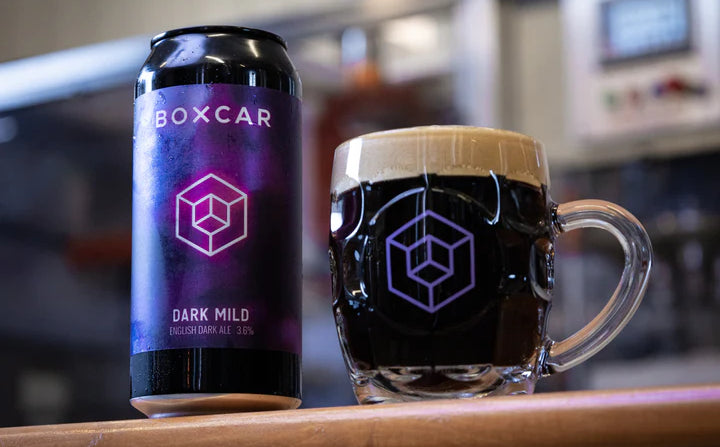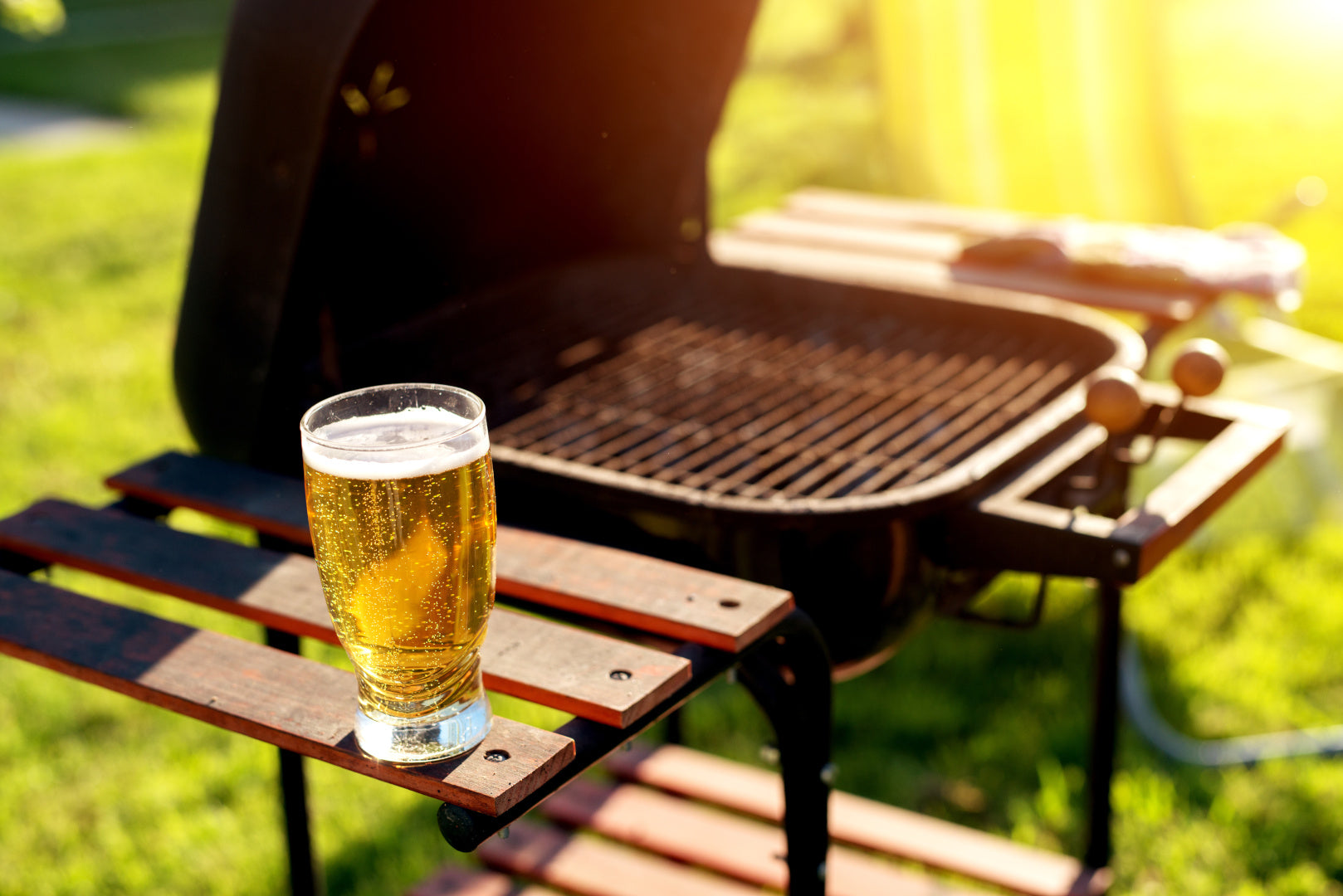
Why classic winter warmers should be enjoyed all year round!
February 21, 2023
Author: Matt Curtis

Why classic winter warmers should be enjoyed all year round!
There is something so incredibly seductive about a pint of nitrogenated stout. Named because it is poured using a gas mix that is predominantly composed of nitrogen, as opposed to the more commonly used carbon dioxide, it produces a specific genre of pint. One with a thick, creamy head that has a dense enough consistency to last until the final sip of your pint, and, when poured, creates something that is as visually appealing as it is delectably.
While not all nitro beers are of the same pedigree (I shudder when I hear the words “smoothflow bitter”) its lure is probably why I’ve been drinking a lot of stout lately – enough to consider this change in habit as ‘notable’. Glorious pints of a ubiquitous, mass-produced Irish stout aside, I’ve also enjoyed plenty of similar style beers produced by small, independent breweries.
One in particular is London Black, a nitrogenated porter produced by Anspach & Hobday at their brewery in Croydon, to the far south of London. On a recent trip to the capital I delighted in drinking as many pints of it as I possibly could; first at their taproom at the top of the infamous Bermondsey Beer Mile, and latterly at one of my favourite pubs, the Sutton Arms in Barbican.
With roasted coffee and dark chocolate notes, balanced by a dryness that makes it so sumptuously drinkable, it quickly cemented itself as a favourite of mine. That nitro pour and the resultant massive, off-white head of foam is so good to look at that I’m often thinking of ordering one just for the satisfaction of being in possession of yet another pint of it. It’s a marketing ploy that has worked so well for the aforementioned Irish mega-brand, now being utilised to stunning effect in far more interesting beers.
This new found propensity for such beers has got me thinking: how seasonal are my beer choices? Is this lust for the darker and creamier spectrum of beers related to it being cold, wet and grey outside, or is it part of a bigger mood? Part of me hopes it isn’t, and that despite having a similar fondness for cold, crispy lagers on hot summer days, I don’t want to discard my love for dark beers when that time inevitably comes around.
Stout isn’t the only winter warmer I’ve been enjoying a lot more of lately, and I know I can’t be the only one. As someone who spends a lot of time frequenting pubs, I can’t help but notice a greater selection of malt-focussed beers on the taps and hand pulls. Mild is another style of beer that has me captivated at present, and on a recent trip to the famous Buffet Bar within Stalybridge station, after finishing a pint of Timothy Taylor’s Boltmaker bitter in what felt like seconds, I quickly turned my attention to the pumpclip advertising Rudgate Ruby Mild.
I don’t understand why I used to be so dismissive of mild, and this example from Rudgate is – for me at least – the perfect example of what the style should be. It’s subtly sweet and chewy, like one of those 10p tuck shop toffee bars that almost yanked your teeth out as a kid. But like a good mild it avoids leaning towards heavily roasted, more astringent flavours, keeps the ABV low to make it drinkable, and has just the faintest snap of hops in the finish to keep it dry. This does the trick inherent to milds, where you feel spurred on towards your inevitable second pint before you’ve barely made a dent in your first. It’s brilliant, and I’m over the moon that I keep finding this, and other milds on tap.
It can’t be just me enjoying these darker beers either. On recent visits to both The Kernel’s Taproom in London and Track here in Manchester, both breweries had an American style brown ale on cask. Around the corner from Track at the new Sureshot taproom, I was offered a glass of imperial stout – one that relied solely on malt and hops to produce its prominent, yet restrained character of black treacle, molasses and a dollop of dark, bitter chocolate. I can’t seem to move for the number of dark (and comforting in these miserable winter months) beers available at the moment.
Anecdotally, the fact that Guinness has recently been declared the UK’s best selling beer (by value, not volume) overtaking Carling in the process. That’s evidence enough for me to suggest that an increasing number of drinkers of all shapes and sizes are choosing the comfort of a dark beer when making their choice at the bar. And, while the majority of those who enjoy The Black Stuff are almost religious in their dedication towards it, this does make me hopeful for a future where we see more dark beers available on the bar.
What I find exciting about this, is that stout, porter and mild merely represent the burnt, sugary crust of dark beer’s crème brûlée – you only need to tap it a couple of times to discover the cream waiting for you below. From heavier styles such as imperial stout and doppelbock, to lighter ones such as schwarzbier and tmavy lezak (the latter being Czech for dark lager) there’s so much to discover within this wide-ranging genre of beers.
Sure, for the purposes of this column I’ve referred to them as “winter warmers” but after writing this – and spending a lot of time thinking about them – I’m relishing the thought of enjoying these styles year-round. After reading this, I sincerely hope you are too.
Here’s three exceptional dark beers that could be considered “winter warmers” that you should try for yourself (regardless of the time of year.)
***
Boxcar Dark Mild (3.6%)

Although East London’s Boxcar brewery is arguably better known for its vast selection of hazy IPAs, it's Dark Mild is perhaps the truest representation of its head brewer, Sam Dickison, and his intentions. The story goes he travelled from festival to festival, sampling as many traditional dark milds as possible before putting a spin on his own. This is a classically delicious mild, with hints of fresh coffee, and a sprinkling of hops, making this as easy drinking as it is the perfect introduction to the style for newcomers.
Chimay Blue (9.0%)

Perhaps the most perennially underrated of all the Trappist Beers, Chimay Blue (also known as Special Reserve) is a dark beer par excellence. It crams in masses of flavour, from stewed dates and prunes, to black treacle, and even white pepper in the finish. The monks of Scourmont Abbey have been brewing Chimay beers since 1862, and although it’s become the largest, and most commercial of the worlds Trappist Breweries, it does not mean that one should turn their nose up at this incredible beer. (Take my word for it and enjoy alongside a healthy slab of blue cheese, such as Stilton or Stichelton.)
Fyne Ales Mills and Hills (9.5%)

When Scotland’s Fyne Ales commissioned its 65 hectolitre brewhouse in 2015, they celebrated the only way how: by collaborating with The Netherlands Brouwerij De Molen, and brewing a stout in which they tried to fit as much grain in the mash tun as it would physically hold. The result was Mills and Hills, a rambunctious imperial stout loaded to the brim with notes of molasses, dark chocolate, and espresso. This ode to malted barley is sure to put a smile on any stout lover's face.
—Matthew Curtis






